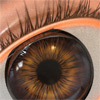- Fri Aug 05, 2005 10:44 pm
#54022
This apporach is quite limiited though, because the relation of Host and Maxwell materials might not be 1:1 or 1:n. If you would like to assign different Maxwell materials to the same Host material, then you are lost. So you have to start duplicating Host materials to assign Maxwell materials.
Kabe
Yes. It's wrong - I never said that.buffos wrote:WrongKabe wrote: After I re-export the scene to Maxwell it must know to update the objects, but keep the materials I have already adjusted.
There's no need to duplicate libraries. If you would like to have a correspondance list, just assign Maxwell materials to Host materials and you are set.buffos wrote: You create two IDENTICAL material libraries in both HOST and MAXWELL libraries and a CORRESPONDANCE list. Thats all
I cannot find any mess.
This apporach is quite limiited though, because the relation of Host and Maxwell materials might not be 1:1 or 1:n. If you would like to assign different Maxwell materials to the same Host material, then you are lost. So you have to start duplicating Host materials to assign Maxwell materials.
They don't need to. All they could provide - and even this is more a convenience feature - would be a way to call M~R in the background to provide a preview pict for materials. It's up to the plugin coders to use that method, and they don't need to to get functional.Kabe, i dont think that NL could create a live connection for all supported applications in another way. Propably for 2-3 apps but not more
Kabe



 - By Mark Bell
- By Mark Bell - By Mike Amos 20251018183343
- By Mike Amos 20251018183343